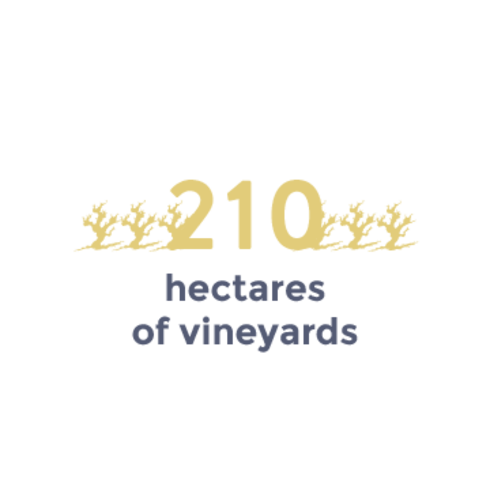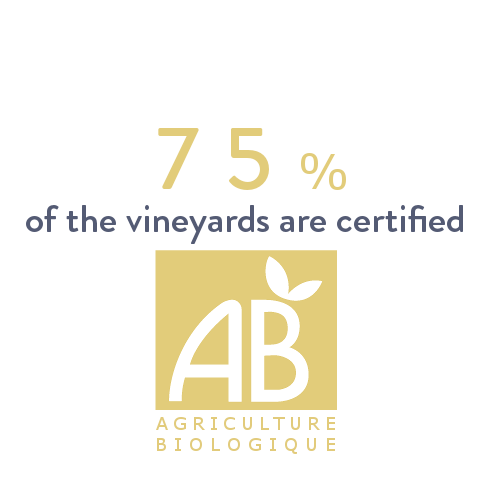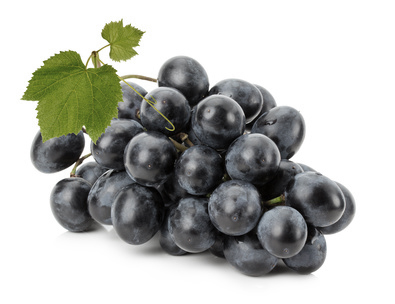Discovering 12 wine estates
The people behind this success: the wine growers.
You must admit that the wine-growers of Cassis have a great strength of character and you’ve got to admire their commitment. It takes a lot of courage to resist the call of the property developers. Passion, to watch each day over the quality of their wine, respect their traditions and open up to new techniques; to unite past and future...
Setting out to meet these enthusiasts...
Although we often talk of wine-growers as men, it must be remembered that in Cassis this profession also counts several women... For example, Jérômine Paret, at the head of the Domaine de la Ferme Blanche who works alongside her father and Philippe Garnier, oenologist and cellar master, or Sophie Cerciello-Simonini, at the head of Clos Val Bruyère, with her oenologist husband.
Two dynamic, strong women who are, of course, passionate…
Tourist Office Cassis wineries
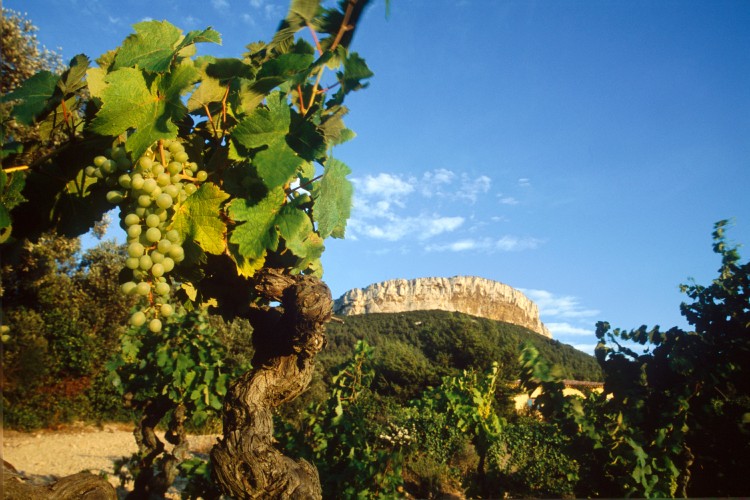
 | Domaine Couronne de CharlemagneFounded in 1988 by Bernard Piche, a passionate Cassiden, the Domaine rises up in terraces at the foot of the Couronne de Charlemagne. It is now managed by Santini family and Bernard Piche and sold at the Domaine du Paternel every day except on Sundays.
The White, dry and frank, has floral notes. Full in the mouth, it develops quince and ripe fruit fragrances. 11 route Pierre Imbert - 13260 Cassis |
The wines of Cassis symbolise a way of life
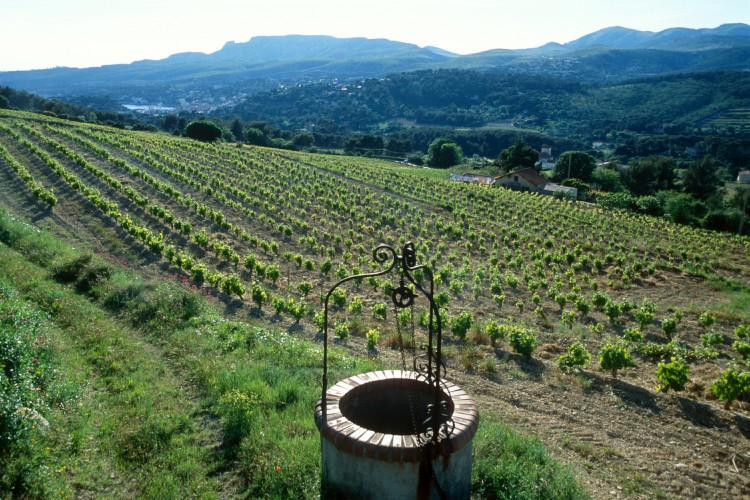
The vineyards
The Cassis Vineyard was among the very first Appellations d’Origine Contrôlée in 1936 (with Sauternes and Châteauneuf-du-Pape). It is planted – and this is noteworthy – exclusively in the district of Cassis, sheltered by Cap Canaille, the tallest coastal cliff in France, plunging down from a height of 400 metres into the Mediterranean.
The presence of stubborn and passionate wine-growers, who have never given into the lure of urbanisation, has maintained the vineyard over relatively large areas. In its latest Land Use Plan, the district has extended the vineyard area from 178 to 210 hectares for three reasons: the vineyards not only contribute directly to the beauty of the landscape and carry a real economic weight, they also play an important role in the protection against fires.
Although the wines of Cassis can be discovered with pleasure around a table, with your family or friends, the real connoisseurs will not fail to take a walk through the magnificent lands of the Cassis vineyards to meet the 12 wine-growers... Because the countryside is agreeable, and the wine-growers know how to initiate wine-lovers into the art of tasting.
Cassis Label of Origin
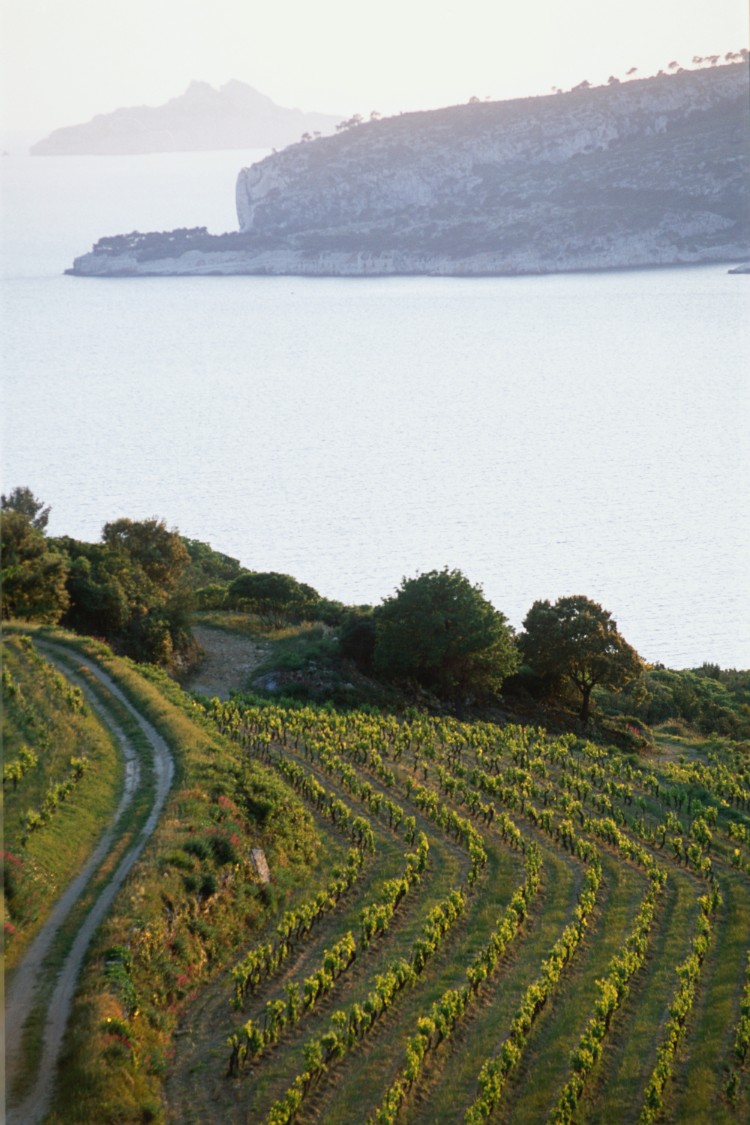
The Cassis Appellation d'Origine Contrôlée
The Cassis vineyard is exclusively planted in the district of Cassis, an "urban vineyard", sheltered by Cap Canaille, the tallest coastal cliff in France, plunging down from a height of 400 metres into the Mediterranean. It’s a "pocket vineyard”, with just 210 hectares for a production of about 1 million bottles a year. One bottle for one vine. A rare wine that is made and sold by twelve wine-growers. Although the whites – dry and fruity – are the most renowned, the reds and rosés are also well-known.
of Cassis, an "urban vineyard", sheltered by Cap Canaille, the tallest coastal cliff in France, plunging down from a height of 400 metres into the Mediterranean. It’s a "pocket vineyard”, with just 210 hectares for a production of about 1 million bottles a year. One bottle for one vine. A rare wine that is made and sold by twelve wine-growers. Although the whites – dry and fruity – are the most renowned, the reds and rosés are also well-known.
An exceptional terroir and a favourable microclimate
Cassis’s distinctive eco-system and unique microclimate are highly favourable:
- It does not suffer much from the Mistral wind whose ardours are cooled as it blows through the pine-crowned hills
- The sea breeze keeps the vines in good health thanks to its healthy humidity
- 3,000 hours of annual sunshine help the grapes to flourish and increase their sugar content
- The rains, in the early spring, allow the vegetation to get off to an early start, and then in the autumn, regenerate the dried-out soil.
The limit imposed on the amounts produced, in favour of the special and constant attention paid to quality, gives the wines of Cassis their distinguished and precious character.
Some figures
The grape varieties

White Marsanne
White Clairette
White Ugni
The Sauvignon
White Bourboulenc (or Doucillon)
Pascal Blanc
The Cinsault
The Mourvèdre
The Grenache
Carignan
Wine-making techniques
Some terms
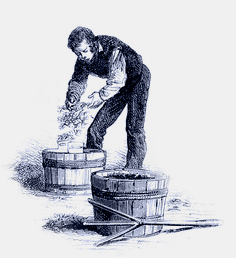
DESTEMMING
Separating the grapes from the stems
(the woody part of the bunch)

CRUSHING
Lightly bursting the grapes
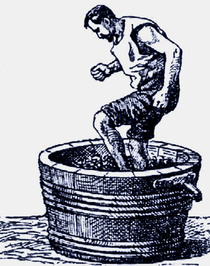
PRESSING
Extracting the grape juice
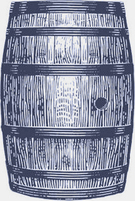
RACKING
To prevent fermentation from starting,
it makes it possible to avoid any decantation, and generally lasts one night
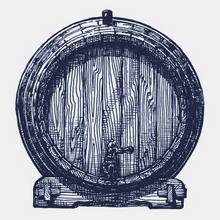
ALCOHOLIC FERMENTATION
Transforming the sugars into alcohol
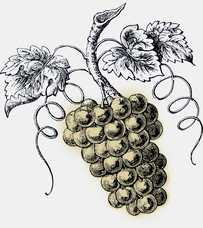
BLANC DE BLANC
This is a white wine made from white grapes
Wine-making processes and maturing
The wines of Cassis are the fruit of traditional techniques as well as of the latest wine-making processes. The grapes are harvested by hand, to ensure a better selection of the grapes. The grapes are then taken in small wooden vats (comportes) to prevent them from being crushed, before being destemmed, and then:
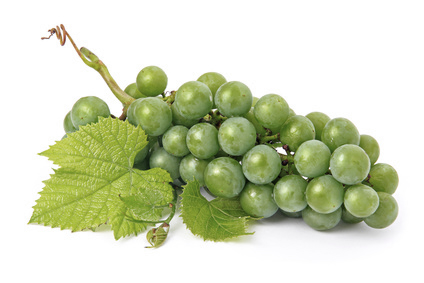
For white wines
Crushed, left to run and quickly pressed and racked, they then undergo heat-regulated alcoholic fermentation (between 18 and 20°C), until all of the sugar has been transformed, without maceration of the solid part of the bunches. The wine is then kept in metallic vats to avoid any oxidation.
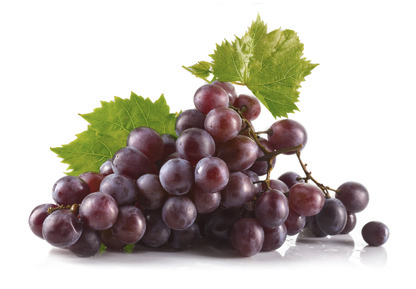
For rosé wines
The wine-making process is carried out in the same ways as for the Whites. It is simply the colour of the must and the kind of grape variety that make it possible to obtain Rosé wines, by saignée (bleeding off) and pressing.

Les vins rouges
The red varieties are crushed partially and then destalked. The fruits are then placed in a vat where they undergo a long maceration during which the alcoholic fermentation is carefully heat-regulated (between 28 and 30°C). Eight to ten days are all that’s required before the wine is drawn off. This will be followed by patient maturing in the tank, with bottling being carried out 18 months later.
Reminder: it is the skin that gives the wine its colour. This means it is possible to obtain a white wine from black grapes.
Food-wine pairings
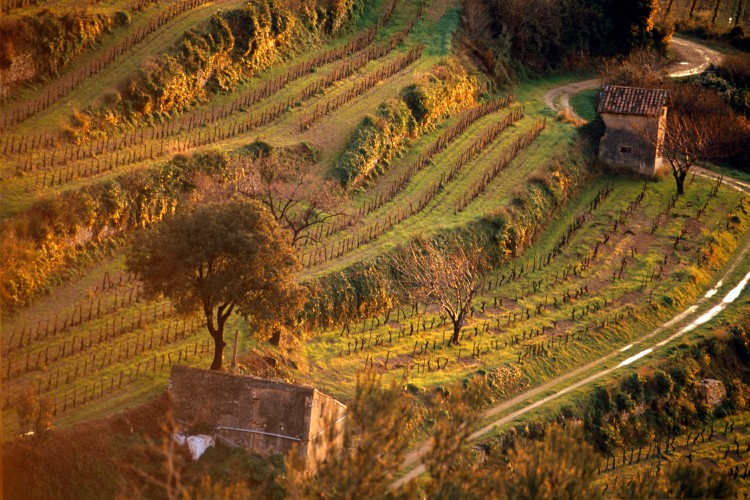

Frédéric Mistral wrote in his poem “Calendal” about the wine of Cassis: “The bee has no honey sweeter, it shines like a limpid diamond, smells of the rosemary, heather and myrtle that covers our hills...”.
Wine is associated with all moments of sharing and conviviality. The wines of Cassis symbolise the art of living. They can be enjoyed starting as an aperitif through to your meal, wonderfully accompanying all the cooking of southern France...
The Whites with their greenish gold glints are succulent, generous, with citrus fruit, white flower, almond or honey fragrances. These are bold, well-balanced wines. The closeness of the sea gives them their iodised nature, with a barely salty vivacity. Besides the famous bouillabaisses, anchoyades and aïolis, bass grilled with fennel, bream in a salt crust, the white wine of Cassis, “born from a coastal vineyard”, accompanies shellfish perfectly. It’s a wine that also goes well with garlicky, saffron-perfumed and spicy, exotic cooking. It is at its best when served at a temperature of between 8 and 10°C.
The Rosés have a slightly salmon-pink colour, along with delicate cherry and strawberry fragrances. They can be served with white meats, dishes such as vegetable or fish terrines, and ratatouilles. They are the ideal companion for barbecues.
The Reds – full-bodied, well-built, with raspberry fragrances – develop leathery fragrances as they age. The go well with meats in sauce, small game, characterful cheeses.




